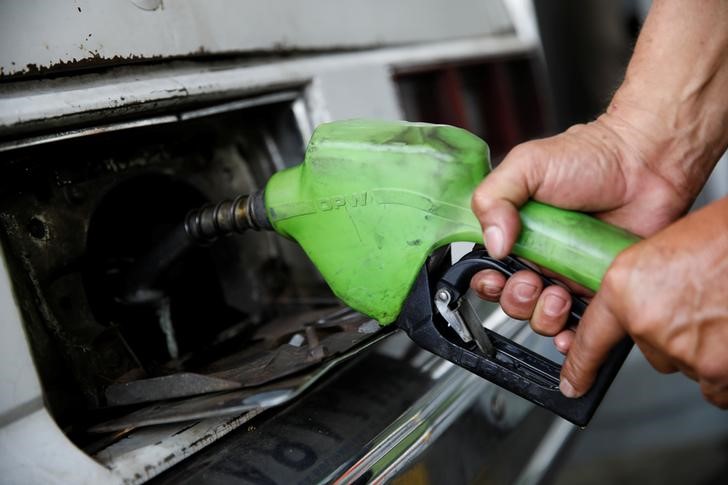 © Reuters. FILE PHOTO – A gas station worker pumps gas into a car at a gas station of the state oil company PDVSA in Caracas
© Reuters. FILE PHOTO – A gas station worker pumps gas into a car at a gas station of the state oil company PDVSA in CaracasHOUSTON (Reuters) – Venezuela’s crude exports to the United States recovered in October from the previous month but were still the third lowest in 2017, according to Thomson Reuters trade flows data.
The South American country sent 541,130 barrels per day (bpd) to customers in the United States in October, 11 percent more than September, as a result of greater volumes of diluted crude and upgraded oil from the country’s Orinoco Belt region.
But the October number was 10 percent lower than the 601,065 bpd exported in the same month of 2016, according to the data.
Venezuela’s overall crude output declined in October to its lowest since 1989, according to numbers reported by the country to OPEC. Sanctions imposed by the United States on Venezuela and its state-run company PDVSA have contributed to weaker exports this year.
The largest recipient of Venezuelan crude in the United States last month was Valero Energy Corp (N:). PDVSA’s refining unit, Citgo Petroleum, which recently has struggled to import oil from its parent company because of sanctions and crude availability, was the second largest recipient.
Other importers of Venezuelan oil in the United States, including Phillips 66 (N:) and Chevron Corp (N:), received smaller supplies than their contracted volumes and typical purchases. Refiner PBF Energy Inc (N:) did not buy any cargo directly from PDVSA.
New York-based derivatives group International Swaps and Derivatives Association on Thursday ruled that Venezuela defaulted on sovereign debt and bonds issued by PDVSA after failing to make timely payments. The association plans to reconvene on Monday to determine the amount owed buyers of credit default swap protection on the debts.
Fusion Media or anyone involved with Fusion Media will not accept any liability for loss or damage as a result of reliance on the information including data, quotes, charts and buy/sell signals contained within this website. Please be fully informed regarding the risks and costs associated with trading the financial markets, it is one of the riskiest investment forms possible.
Source: Investing.com



























